Rejuvenated: description, varieties and tips for growing
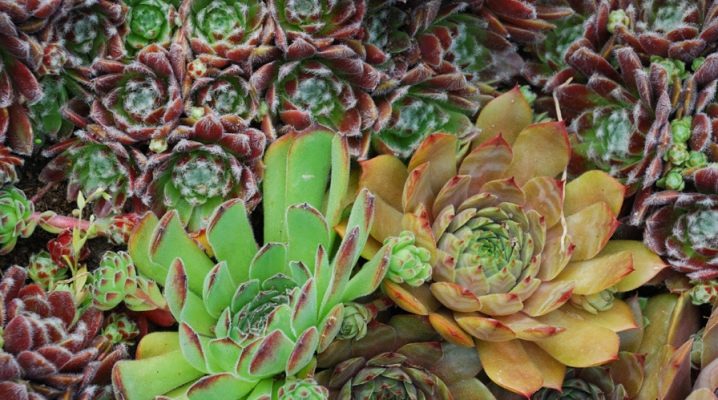
The name "young" sounds in Latin as Sempervivum, which means "always alive". Indeed, this plant is remarkable for its vitality and ability to survive in the most difficult conditions. Due to this quality, as well as its unusual appearance, the rejuvenated is very popular not only among flower growers and gardeners, but also among landscape designers. Let's take a closer look at this amazing flower and its many varieties and tell you how to care for it, grow it and multiply it.
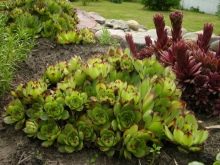
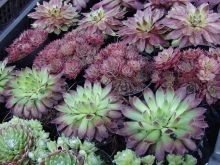
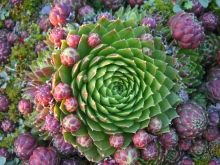
Peculiarities
Rejuvenated belongs to the genus Sedum - perennial herbaceous plants with thick fleshy shoots.
Among the people, the youth is also called a "stone rose" for its resemblance to the "queen of flowers". Only a kind of "bud" is formed not by petals, but by leaves. They have a dense skin and look like a rosette, the diameter of which varies from 1 to 15 cm in different species.
The shape of its leaves is different: there are pointed at the ends, rounded or elongated leaf cups, in some varieties with hairs, in others - smooth. Their color is also varied. The dominant color is green, but it is often diluted with red, brown, pink or white blotches, found in nature and specimens completely colored in these colors.
There are even species that can change color depending on the season.
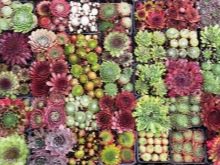
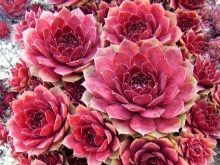
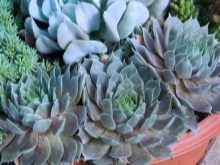
The rejuvenated belongs to the group of ground cover plants, which visually resemble a carpet in large numbers, therefore they are also called "carpet plants" and are actively used to decorate backyard and adjoining territories.
But young people are grown not only in garden plots - on the windowsills of apartments you can also often find pots with a "stone rose".
It blooms young already in adulthood, having crossed the 3-year line. Flowers (which also differ in color variety) appear in the summer and delight with their beauty and aroma for 1 to 2 months.
However, this only happens once in a lifetime. Then the plant dies off, giving way to younger and more active offspring.


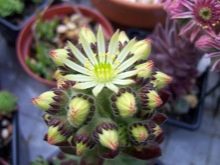
Varieties and types
Under natural conditions, you can find over 50 varieties of rejuvenated. And how many artificial varieties have been bred on their basis - it's easy to lose count! The territory in which the flower grows in nature is very vast: it covers most of Europe and Asia, the Caucasus and central Russia.
Let's get acquainted with the most famous and demanded species.
- Roofing (lat.Sempervivum tectorum). It is one of the oldest and most popular species. Its name goes back to the Middle Ages. It was believed that it was rejuvenated - this plant of the Scandinavian god of the Thunderer Thor, so it was planted on the roofs of houses to prevent lightning from falling into them. The rosettes are shaped like a ball, the diameter of which can vary from 5 to 15 cm. They consist of dense, thick leaves of bright green color with sharp red tips. In July, lilac flowers appear on high (60 cm) peduncles and delight the eye for almost 2 months.
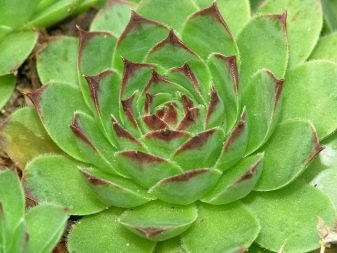
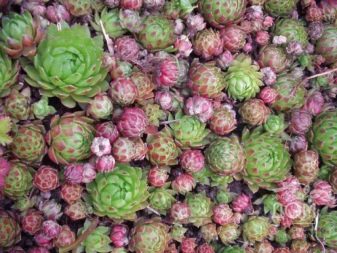
- Cobweb (Latin S. arachnoideum). His rosettes are very small - only 3-4 cm in diameter. The plant is greenish-red in color, and there are fine white hairs at the tips of the leaves and in the center of the rosette, strikingly resembling a cobweb.Habitat - mountainous area in the Caucasus and Western Europe. Cobweb blooms young in July.
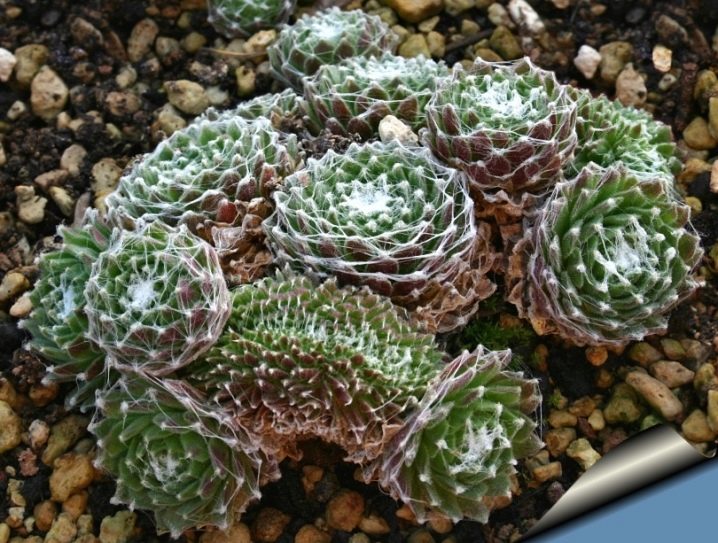
- Russian (Latin S. ruthenicum). It grows on the territory of Russia in the European part and in the Balkans. The diameter of the rosette is 4-7 cm. The leaves are elongated, long, light green in color with sharp reddish ends, similar in shape to chamomile petals. Peduncles reach 35 cm in height; in July-August, yellow flowers appear on them, which last 1-1.5 months.
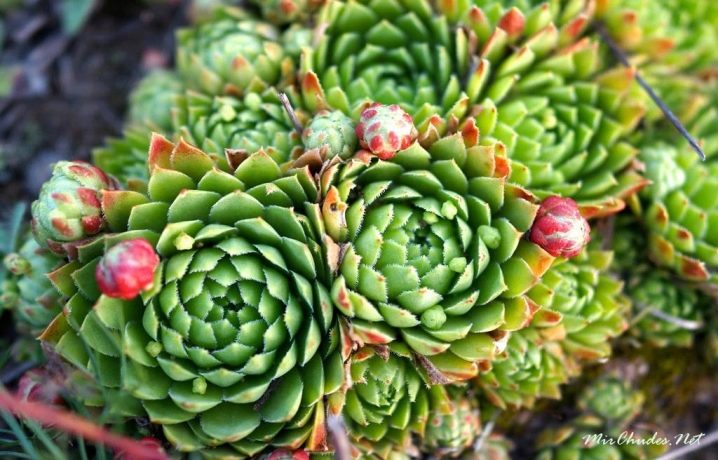
- Escaping (Latin S. soboliferum). It grows in Western Europe and on the territory of Russia. Medium rosette, up to 6 cm in diameter. The leaves are bright green with sharp red edges, topped with cilia. The flowering time falls in June-August and lasts 1.5 months: yellow flowers up to 10 cm in diameter appear on 20-centimeter peduncles.
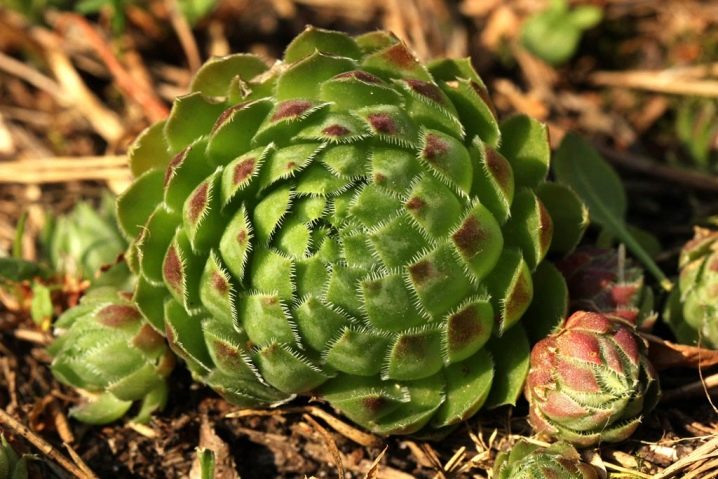
- Spherical (Latin S. globiferum). The areola of his habitat is the Caucasus and the East of Turkey. It has luscious green wide rosettes with a diameter of 5 cm with pointed reddish ends and cilia at the edges. It blooms in the second half of summer with yellow flowers.
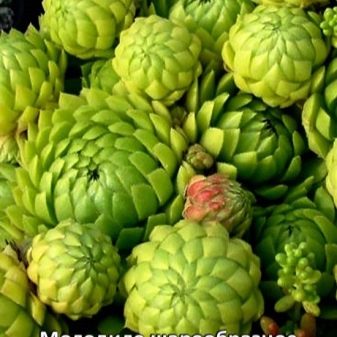
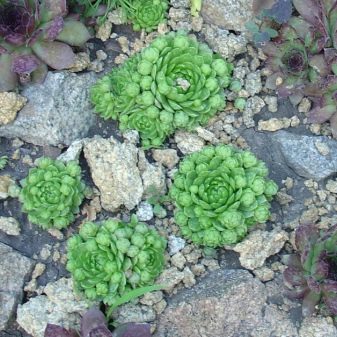
- Caucasian (Latin S. caucasicum). It has pale purple rosettes of small diameter (no more than 5 cm) with long and sharp petals. Flowers sit on stems 20 cm high. Flowering occurs, as a rule, in late summer.
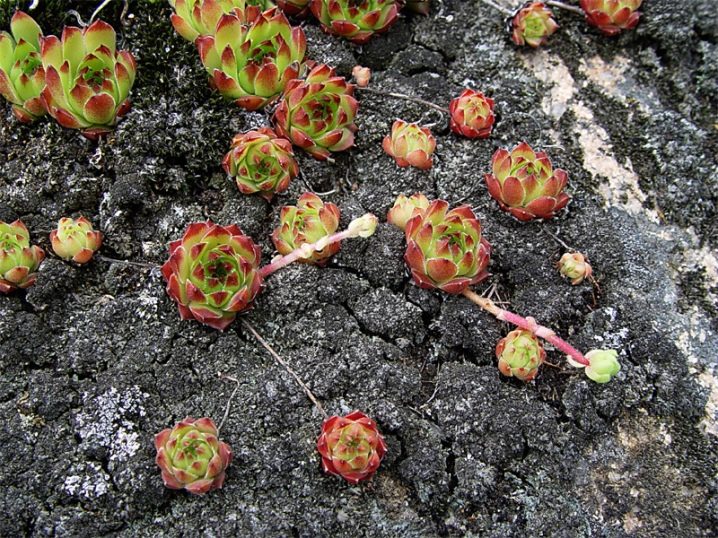
- Mountain (Latin S. montanum). Grows in the mountains of Western and Central Europe. Tiny rosettes (less than 2 cm in circumference) of dark green oblong shape with pointed ciliary edges are abundantly covered with glandular hairs. On low peduncles (5-7 cm), lavender small flowers appear.
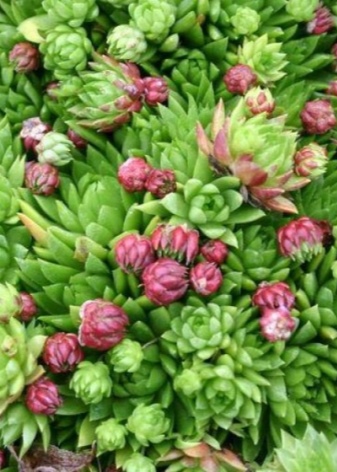
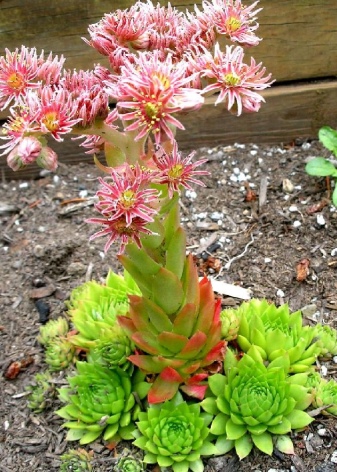
- Cassiopeia (Latin S. Cassiopeia). This species is characterized by cold resistance, the ability to withstand severe frosts, therefore it is suitable even for breeding in the northern Russian regions. Also, this species can change the color of the leaves: from green in the fall to red in the spring and summer.
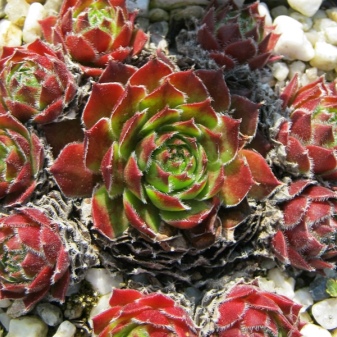
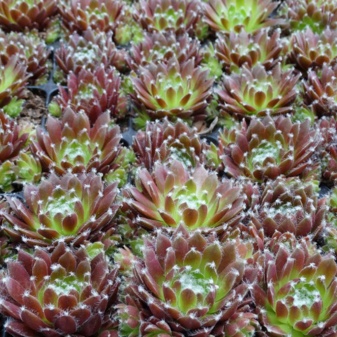
- Palisander (lat. S. Palisander). A plant with large, fleshy red leaves. Blooms in early summer.
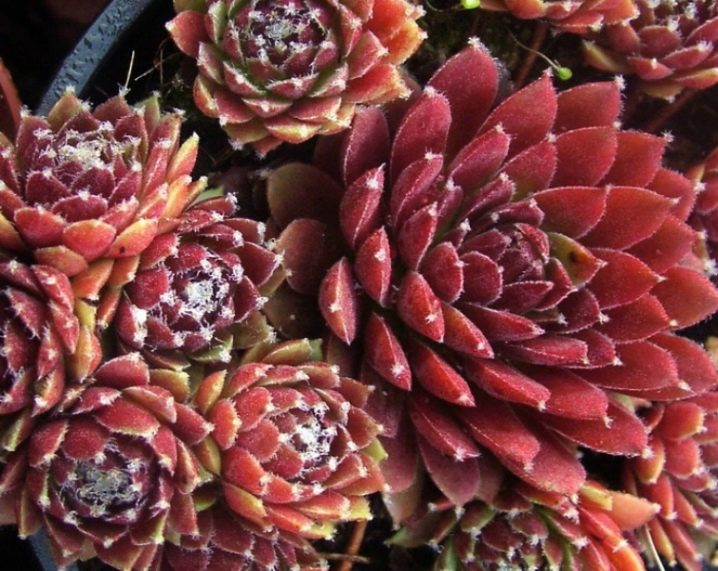
- "Pharaoh" (lat. S. Faraon). This hybrid variety was rejuvenated. Rosettes of bright light green color up to 10 cm in diameter. They are crowned with a purple triangular tip.

Famous hybrids include Rosa Madchen, Orion, Sirius, Princess, Julia, Rubin and Reinhard.
Landing
In open ground, the "stone rose" can be planted from early spring to early autumn, so that it has time to adapt to the winter cold.
Due to weak short roots, it is not picky about its habitat, it can grow even in crevices between stones. However, the land prefers barren, slightly alkaline and mostly sandy. Low-lying soils are not suitable - from an excess of moisture, the plant will rot and die. If clay soil becomes the habitat of the "stone rose", then add to it sand, granite chips or expanded clayso that the water does not stagnate and does not contribute to root rot.
The only prerequisite for the favorable growth of a flower is a well-lit, sunny place. In the shade, it grows worse and the color of the shoots will not be so bright and juicy.
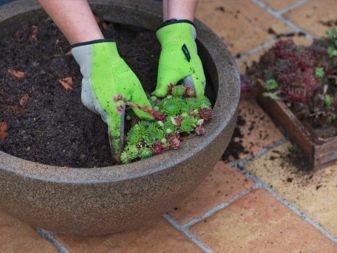
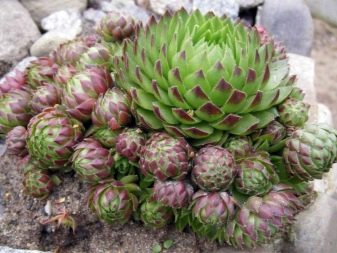
It is necessary to plant rejuvenated on a weed-free land - they will interfere with the growth of stone flowers, blocking sunlight from them. The sockets should be at a distance of 10-15 cm from each other, for small outlets 5 cm is enough.
If the young will grow in your house in a pot, then use as a substrate sand and peat (4: 1), a combination of leafy soil and sand (1: 1) or ready-made potting mix for cacti, you can add sawdust or crushed chalk to it, and put a drainage layer on the bottom.

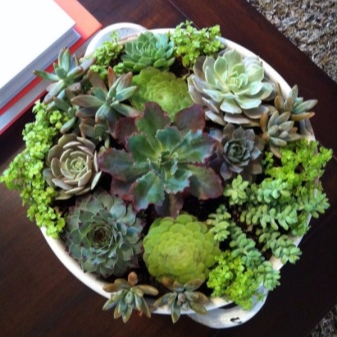
It is desirable to replant rejuvenated every 3 years. The main indicator that the plant needs a new habitat is the size of the rosette, equal to the size of the pot in which it is located.
The best pot for transplanting because of its good culvert is a ceramic pot.Its shape should be low and wide, since weak roots are not able to penetrate to great depths.
The algorithm of actions is simple:
- put drainage on the bottom (small expanded clay and pebbles), then the soil mixture itself;
- we dig out the young from the old "house", shake off the earth from the roots and remove their damaged areas, then treating the cut points with chalk or coal;
- water the soil in a new pot and plant a flower there, carefully distributing the roots over the entire depth and width of the pot;
- for a week, you need to put the container in a darkened place and do not water during this time.


Care
Rejuvenated is an unpretentious plant that does not require special care. However, the minimum rules for its content must be known and followed.
- The "stone rose" needs sufficient sunlight. Consider this point when choosing a landing site, especially in an apartment - it is preferable to use windows located in the west or east.
- The temperature must be positive. The flower is resistant to heat, even extreme and severe drought, but it does not tolerate cold well.
- Air humidity should be medium. Do not let it go down much - this will affect the appearance of the shoots, which will begin to fade, lose color brightness.
- Rejuvenated does not tolerate an overabundance of water. It should be watered infrequently, in winter it is enough to do this 2 times a month. In warm weather, moisten the soil once a week. Use water at room temperature and not hard, preferably filtered. To avoid the appearance of rot, try not to pour water on the leaves themselves - it should only fall on the soil.
- Indoor "stone rose" must be ventilated every day. In warm weather, it is recommended to provide constant access to fresh air by placing the young on a balcony, loggia or street, you can even plant it in the ground in the summer.
- The soil should be poor and infertile, the basis of which is sand.
- "Stone flowers" are so adapted to survive in any conditions that they do not need fertilizers, especially at a young age. Instances older than 3 years can sometimes be fed with cow dung diluted in water in a ratio of 1: 10, or given fertilizers for cacti, but only by reducing the concentration of the composition by 2 times.
- Remove weeds and faded parts of the plant itself in time.

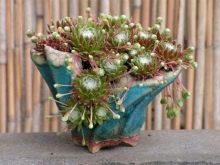

Reproduction
You can get new specimens of the "stone flower" in 2 ways.
Vegetative (using child outlets)
This is the easiest and fastest way of reproduction by which plants increase their population in nature, it is also used to obtain new plants on the site.
In individuals that have reached 2 years of age, small daughter rosettes begin to form. Separate "mothers" and "children" should be in the spring or summer, after the completion of the pore flowering of adult plants. We carefully separate the "children" from the "parents" by treating the cut site with activated charcoal or chalk, then we plant each process separately at a distance of 7-10 cm from each other. Even if the daughter outlets do not have roots at the time of planting, it's okay! They will quickly appear when grown independently.
It is very important to provide the sprouts with sufficient heat and light. If the sun is not enough, then use phytolamps.
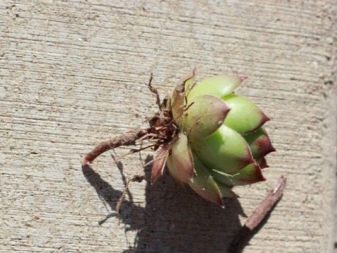

Seeds
This breeding method is not very popular as the growing process takes a long time. In addition, in order to obtain offspring from seeds at home from plants already sitting on the site, a number of conditions must be met, for example, parallel flowering of two individuals "non-native" to each other. It's easier to buy a bag of seeds at the store.
They are planted in early March, but if the weather permits, you can also at the end of February. The seeds are placed in shallow containers of about 1 mm, filled with slightly moistened soil, with several seeds in each. The soil for planting must be sand and peat with an admixture of limestone. You can purchase a composition designed for cacti.
After planting, the dishes with seedlings are placed in a bright and warm place at home, but such that the plant is not burned by direct sunlight. The optimum growing temperature is 20-25 degrees. It is advisable to cover containers with glass or plastic wrap to speed up emergence. Remember to ventilate them every day. The first shoots can be seen already on the 4th day, after which watering must be increased.
In early May, seedlings are transplanted into separate pots. The end of June - the beginning of July is the time for planting seedlings in open ground.
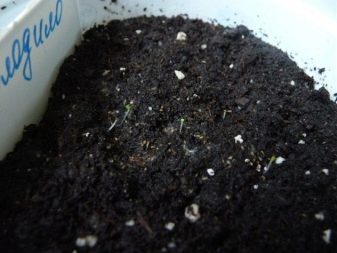

Diseases and pests
Rot is the problem most often faced by young people. It arises from the increased susceptibility of the "stone rose" to moisture. From an exceeded dose of water, the plant begins to change color to dark red and rot. This may be due to long, heavy rainfalls or too much watering. In the latter case, the amount of moisture can be easily adjusted.
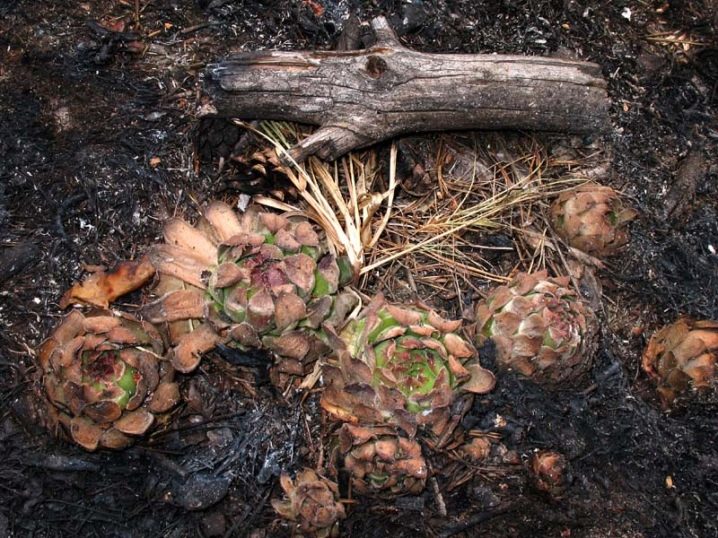
The plant is quite resistant to pests due to its dense leaves. However, they can infect weak root systems.
The most dangerous insects.
- Mealybug. Its presence is evidenced by lumps of transparent white color on the leaves and in the core of the rosette in combination with yellow spots. Method of treatment: wash the plant with alcohol or soapy water under warm water, then treat it with an insecticidal solution like "Tanreca" and wrap it with polyethylene for a couple of days. Repeat the procedure again in a week.
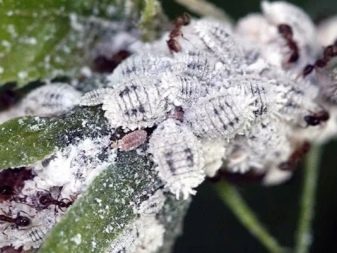
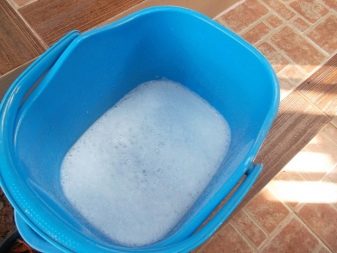
- Root worm. It infects the plant, leaving yellow dry shoots and a white wax coating on the roots. To get rid of this parasite, you need to place the container with the plant in a hot bath for 15 minutes, and then dry it thoroughly. If the treatment does not work, then transplanting into another pot with a new potting mixture will help.
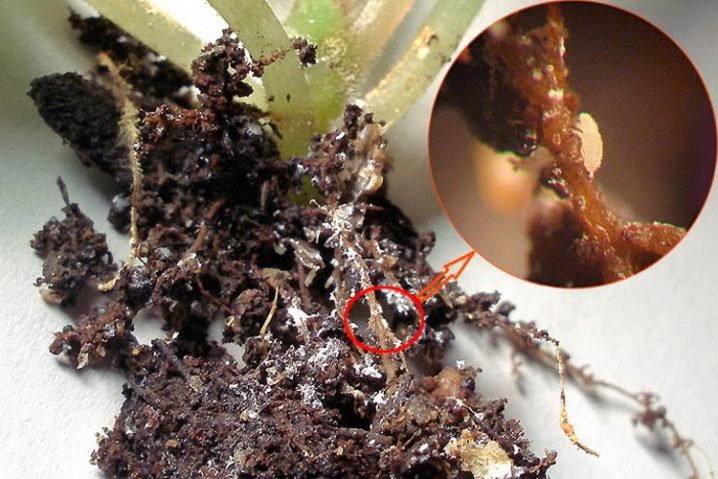
- Root nematode. If the plant is infected with a nematode, then the leaves begin to turn yellow and dry, and the roots swell in some places, which prevents the further growth of the plant. However, it is not difficult to get rid of this pest - you need to hold the roots in hot water for several minutes and then sprinkle with an antiparasitic drug, for example, "Lindane". The hot shower can be repeated after 2 weeks.
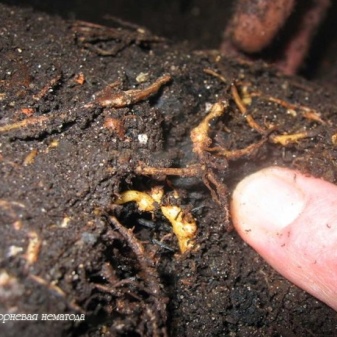

- Root rot. This is a fungal disease in which the color of the shoots changes to dark brown, the roots become soft and a rotten smell appears. Several stages of treatment will be required.
- First of all, it is necessary to rid the plant of the affected areas by applying activated carbon or chalk to the cut sites.
- Then you need to dig the plant out of the ground and place the roots for half an hour in a solution of potassium or a weak fungicide.
- It is advisable to transplant the young. However, if the flower is already too strongly affected by the fungus, then it is better to get rid of the plant.
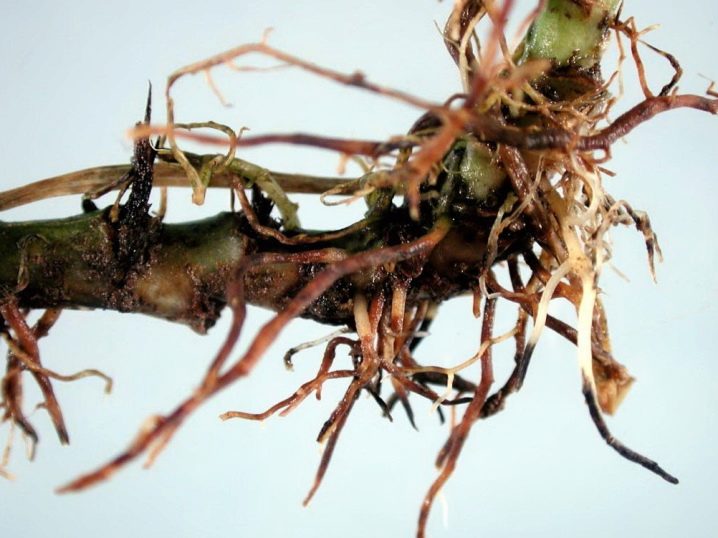
If the young are planted in the open air, then birds (magpies, crows, jays), worms, as well as beetle larvae, which gnaw not only the roots, but also the stems, can harm the plant. For birds, use a proven remedy for centuries - a garden scarecrow. And in the event of an attack by beetles, the plant will need to be transplanted to a new place with preliminary cleaning of larvae.

Use in landscape design
Due to its unusual appearance, unpretentiousness to living conditions, as well as the variety of colors, landscape designers and owners of garden plots fell in love with it.
An incredibly popular combination was rejuvenated with a stone. A large boulder surrounded by "stone flowers" will look very beautiful. However, the plant is most actively used as a decorative element in rockeries and alpine hills.
It is also planted in pots located one above the other at an angle, thereby creating the effect of flowing water. They are decorated with paths or ladders on both sides. They are also used as a decoration for various statues and figurines.
And in our time, the plant is placed on flat roofs of houses or gazebos, but only now it performs not a protective, but an aesthetic function.
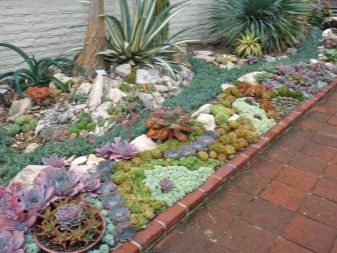
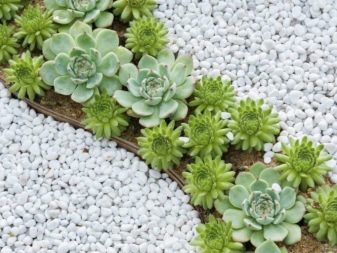
You can simply plant the young in the flower beds in the garden along with other flowers. A solid carpet of "stone flowers" of different colors looks beautiful, creating the appearance of a flower sea. Most often, rejuvenated is combined with stonecrops, saxifrage, arabis, antennae and moss.
The "stone flower" should only coexist with the same undersized plants as itself - they will not block its access to sunlight. Therefore, it is better not to plant the young next to tall flowers and bushes.
Rejuvenated - not only a beautiful plant, but also a useful one. It has a wide range of medicinal properties: it is able to relieve inflammation, relieve pain and heal wounds. This is another reason to grow young on your site or windowsill, especially since this is not difficult to do.
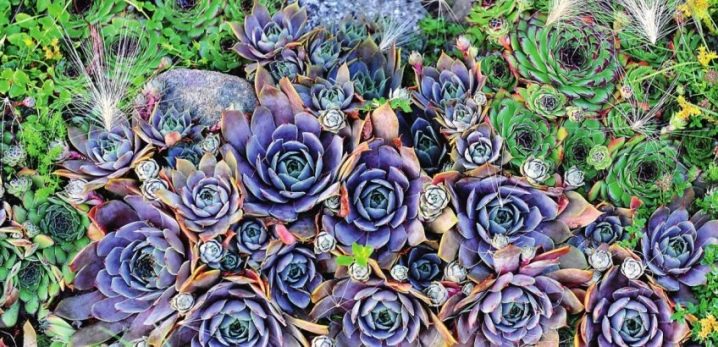
For even more about the features of growing young, see the next video.















































The comment was sent successfully.